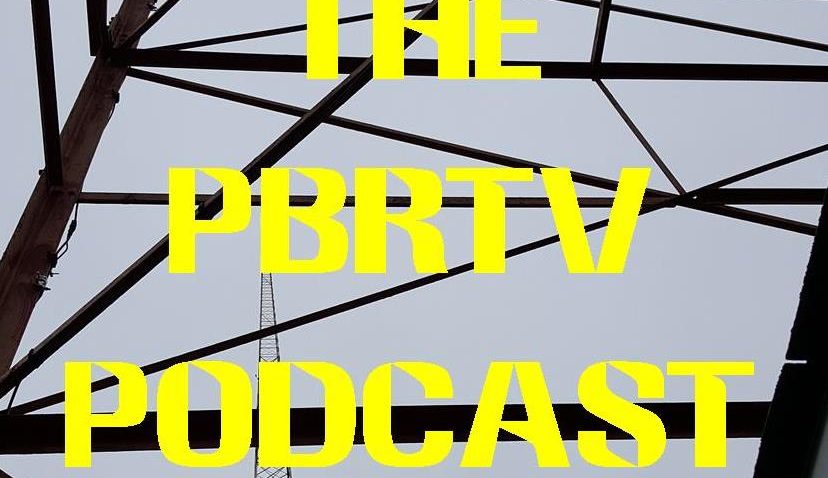The wooden age of radio
April 21, 2008
You didn’t get much for your money. In fact, output was so faint you had to use headphones to listen.
If you wanted a radio with an external speaker, you had to move up to a set like the RCA Radiola IV, which was on sale for $275 at Kaufmann & Baer Department Store (later Gimbels).
Budget-minded shoppers either bought their own parts and assembled their sets from plans published in magazines, or bought a kit like the one that Frank & Seder offered for $17.95.
Also, you didn’t just plug the radio into a wall socket. Every radio then sold ran only on battery power. If you had the equipment at home, you could charge the batteries yourself; otherwise, you carted them to a gas station and had them recharged before you listened.
That’s why radio was still a plaything for men (women were not supposed to know anything about electricity, machinery or technology) and the wealthy.
. . .
 Assuming you could afford a radio — and that it worked — what did you hear?
Assuming you could afford a radio — and that it worked — what did you hear?
First of all, receiving any station could be difficult. Most U.S. stations were on either 360 meters (833 kHz AM) or 400 meters (750 kHz AM).
In Pittsburgh, for instance, KQV, KDKA and WJAS were all on 833 kHz, and often broadcast simultaneously, setting up a tremendous racket in listeners’ headphones.
That problem was solved in May 1923, when U.S. Department of Commerce (there was no FCC) assigned stations to new frequencies. KDKA went to 920 and KQV went to 1110; WJAS stayed at 833 temporarily before moving to 1050 in 1924.
. . .

If you received a station clearly, you didn’t hear disc jockeys. Although Westinghouse engineer Frank Conrad, whose amateur radio station became KDKA in 1920, used to play records on the air, recorded music wasn’t heard much when regular broadcasting began. Instead, live musicians and singers performed.
And there were no radio “formats,” and so-called “pop” music was rarely heard. Instead, stations featured speeches, light opera, classical selections, and religious and ethnic music.
For instance, Monday, April 23, was “Scandinavian night” on KQV, featuring piano and vocal selections from the composers Jean Sibelius and Edvard Grieg.
The same night, KDKA featured “concerts” interspersed with a “Shakespearean program” at 7:15 p.m., a farm report at 8, and “home furnishing report” at 8:15.
WJAS had music from the M.H. Pickering Furniture Co. between 7:30 and 9 p.m.
WCAE, then at 400 meters (750 kHz), offered a “dinner concert” by the orchestra from the William Penn Hotel, followed by a bedtime story from “Foxy Grandpa” and two hours of what was then called “hillbilly” or “cowboy” music by a group called “The Oriental Melody Kings.”
. . .
Then again, people with radios weren’t tuning in because of the programming. They were listening for the novelty of having music and voices transmitted wirelessly to their homes or offices.
As the technology improved, radio programming became more sophisticated, and radios became an easy-to-use, common utility.
But in great-grandpa’s day, people didn’t take radio for granted. Considering the primitive radio technology of the day, it was a wonder when they could receive anything.
That’s why Pittsburghers of 1923 thought radio was nothing short of miraculous.
Of course, some of us still do!

What do you think of when you think of the “golden age of radio”?
The great comedies and dramas of the 1940s? The swinging Top 40 DJs of the 1960s? The album rockers of the 1970s? Program-length infomercials in the 1990s? (OK, probably not that last one.)
When your grandfather or great-grandfather got nostalgic for old-time radio, maybe he was thinking of the early days, when you had to be technically savvy, extremely wealthy, or both to own a radio.
. . .
Listening to a radio in April 1923 — 85 years ago — was like being connected to the Internet in 1988, or owning an electric car in 2008.
Pittsburgh then had four radio stations — KQV, KDKA, WCAE and WJAS. (Stations also were licensed to Erie, Grove City and McKeesport. Only the Grove City station, WSAJ, survived into the modern era.)
The cheapest radio on sale in 1923 was the Westinghouse “Aeriola Jr.” crystal set. Though it didn’t require batteries, reception was limited to the strongest signals, and audio could only be heard (faintly) through a set of headphones. For that, Rosenbaum’s Department Store on Sixth Avenue between Liberty and Penn avenues wanted $9.50 — about $119 by today’s standards.
By comparison, the average American was making less than $30 a week.
Better radios, like the Westinghouse-made Radiola RC, had more selective tuning and used several vacuum tubes for amplifying the signal electrically. Doubleday-Hill Electric Co. at 719 Liberty Ave., which owned and operated KQV, had a Radiola RC for $142.50 (about $1,780 in 2008 dollars), and that was marked down from the original price of $207.50!

